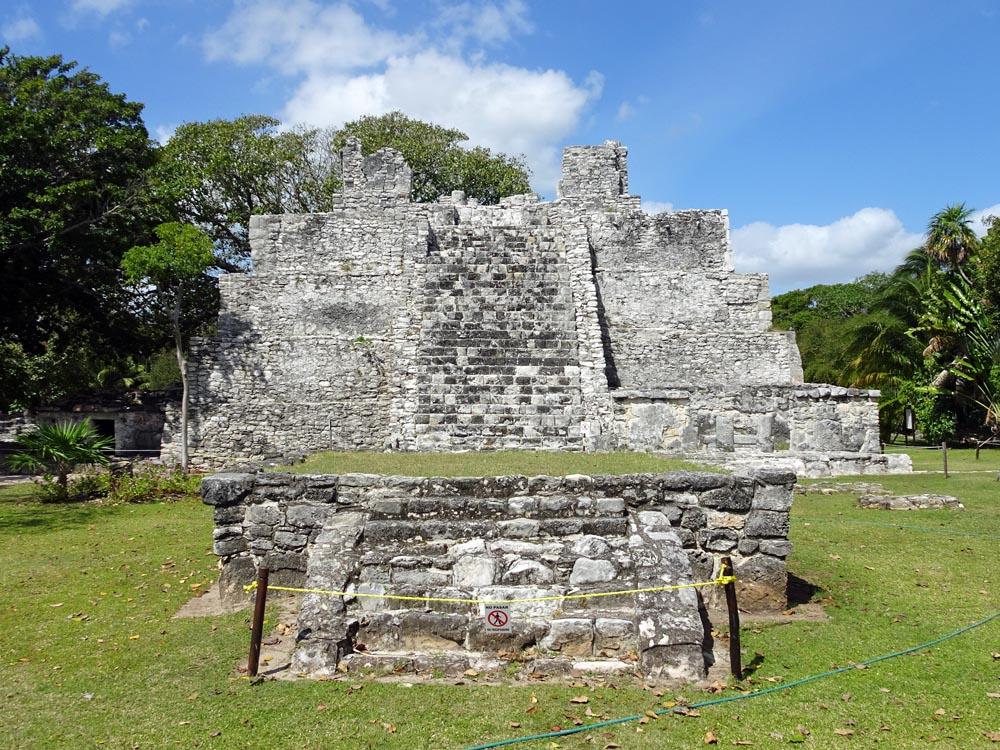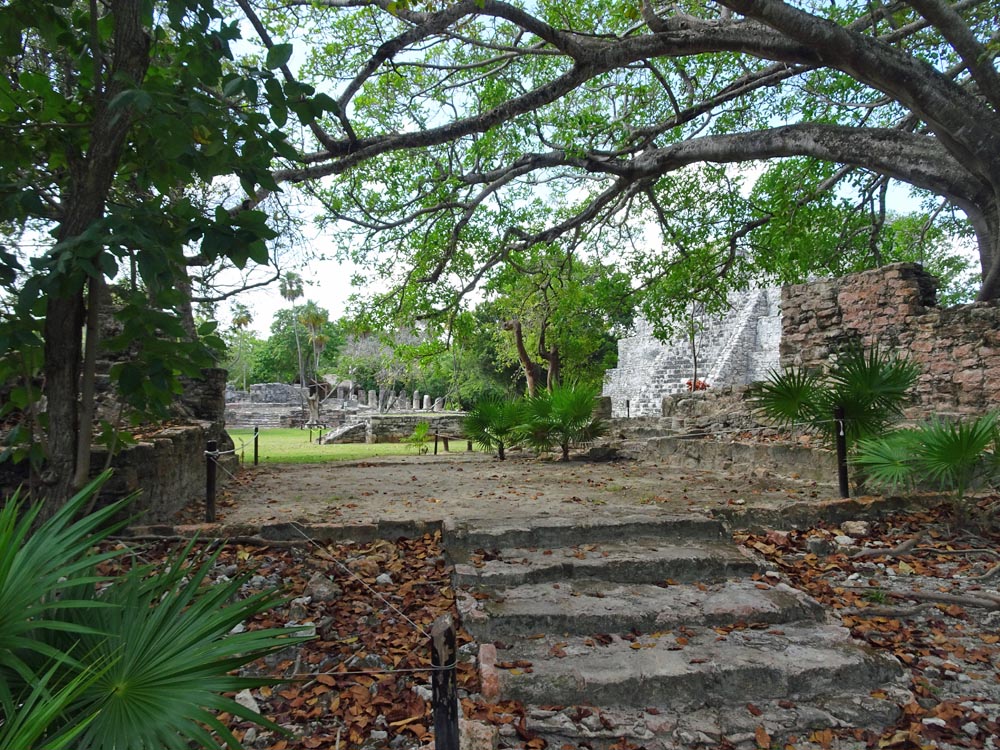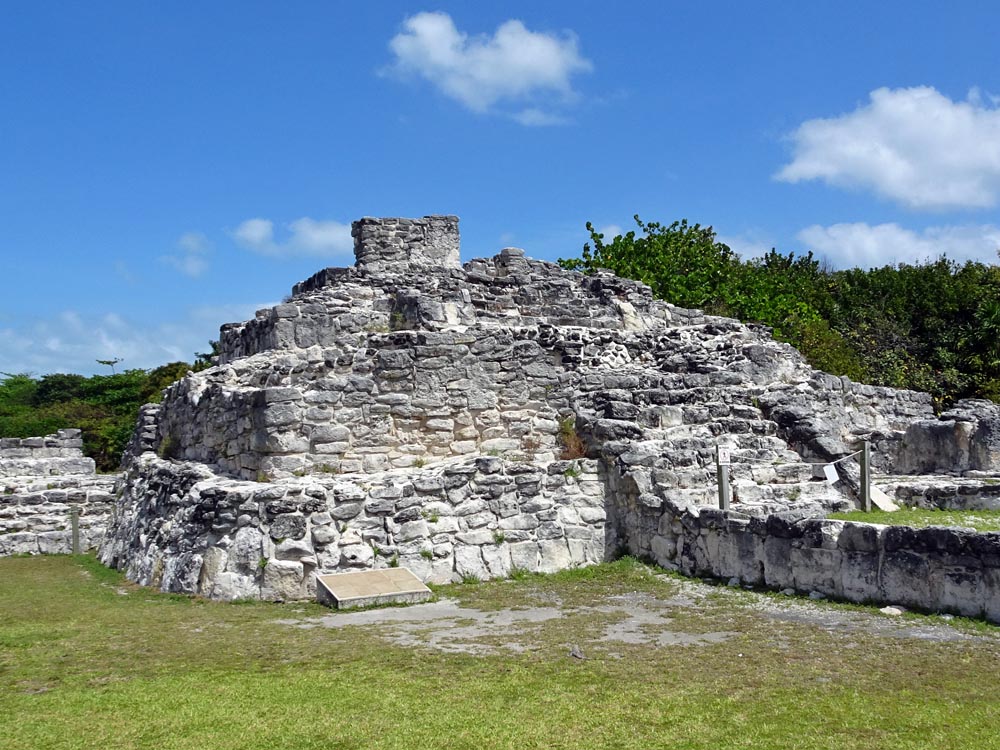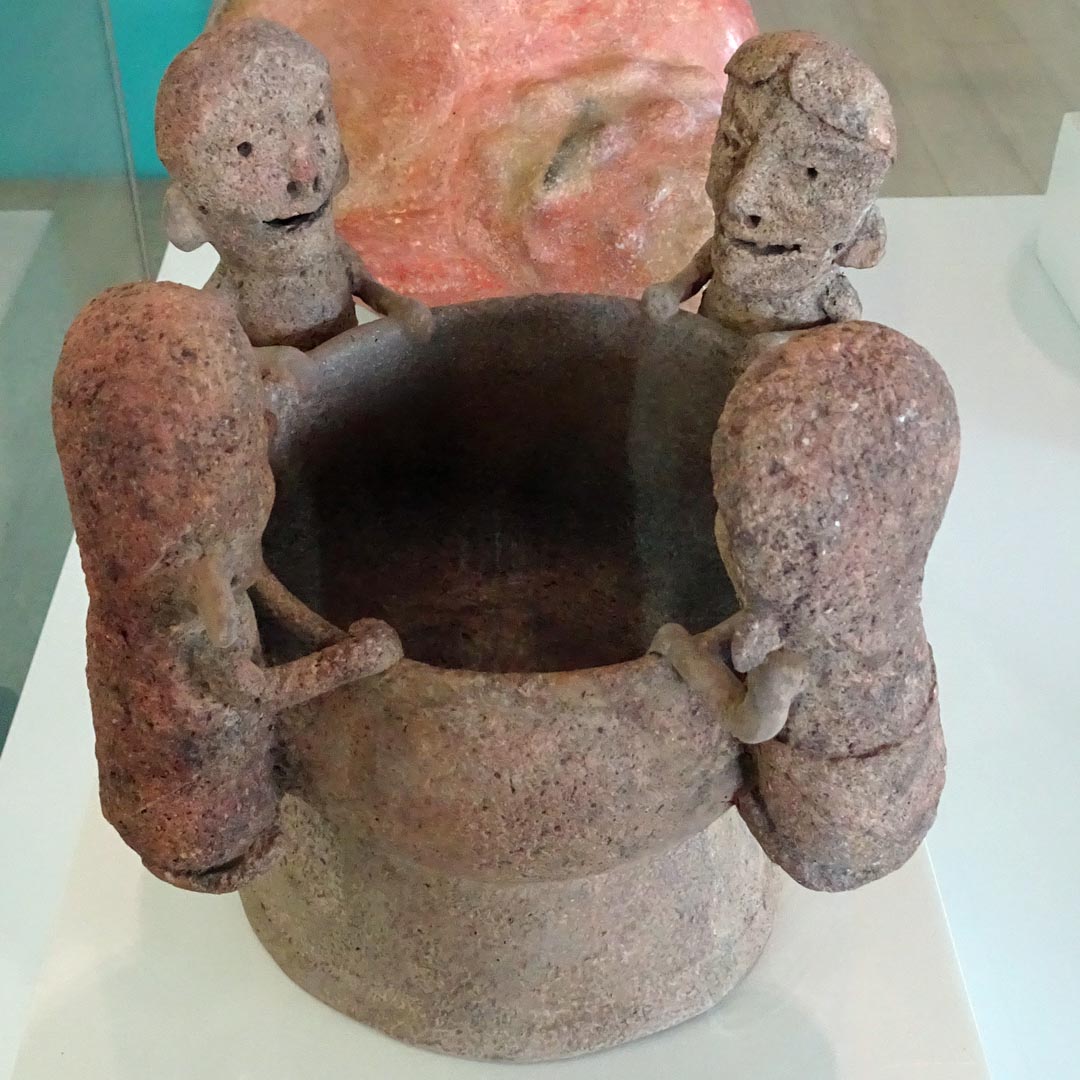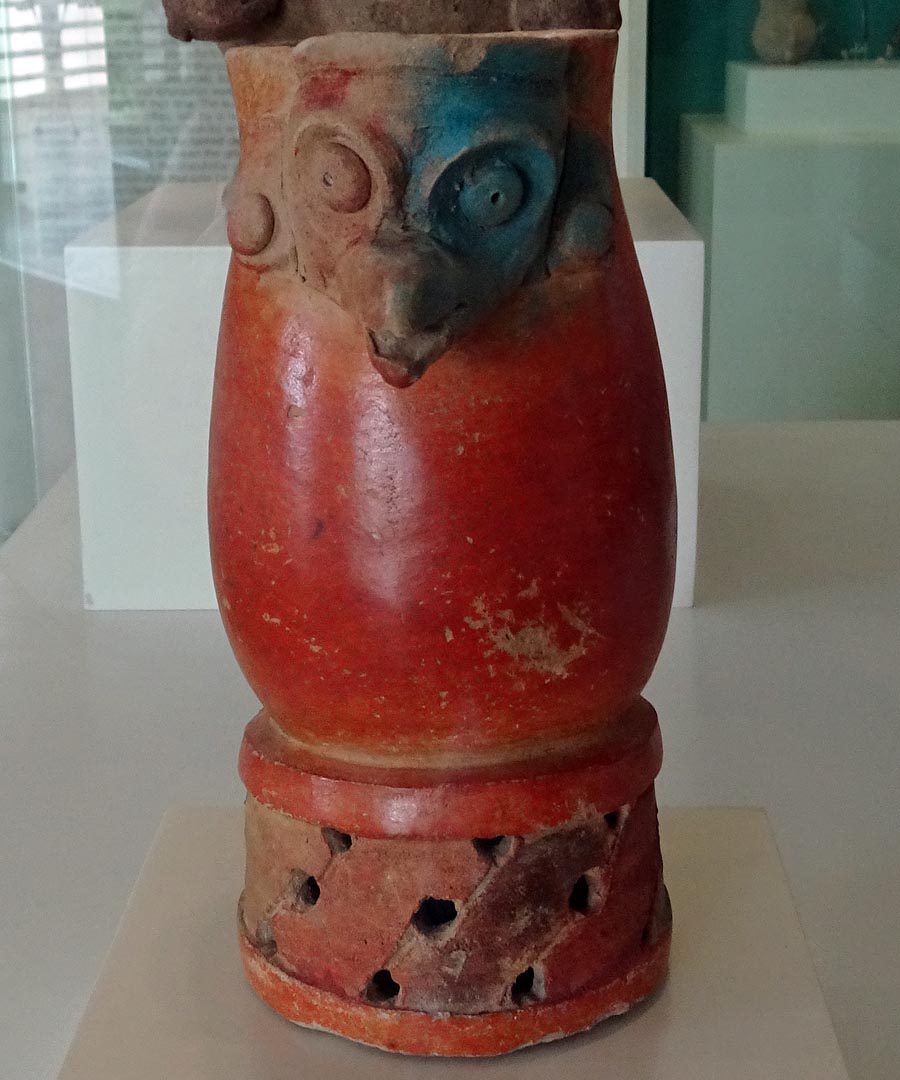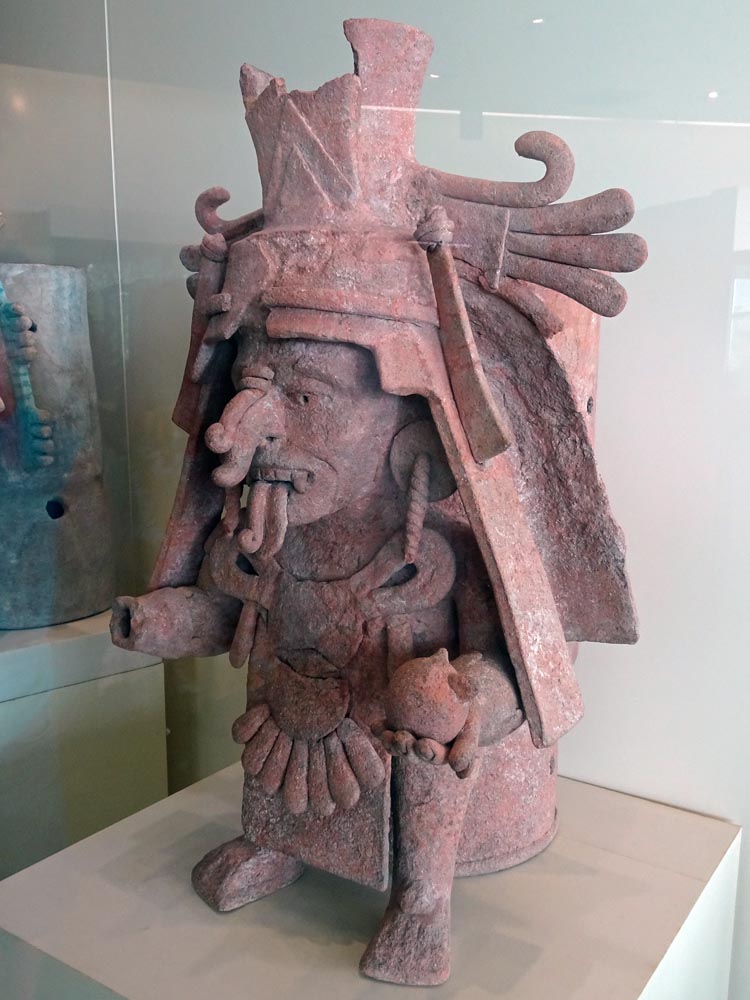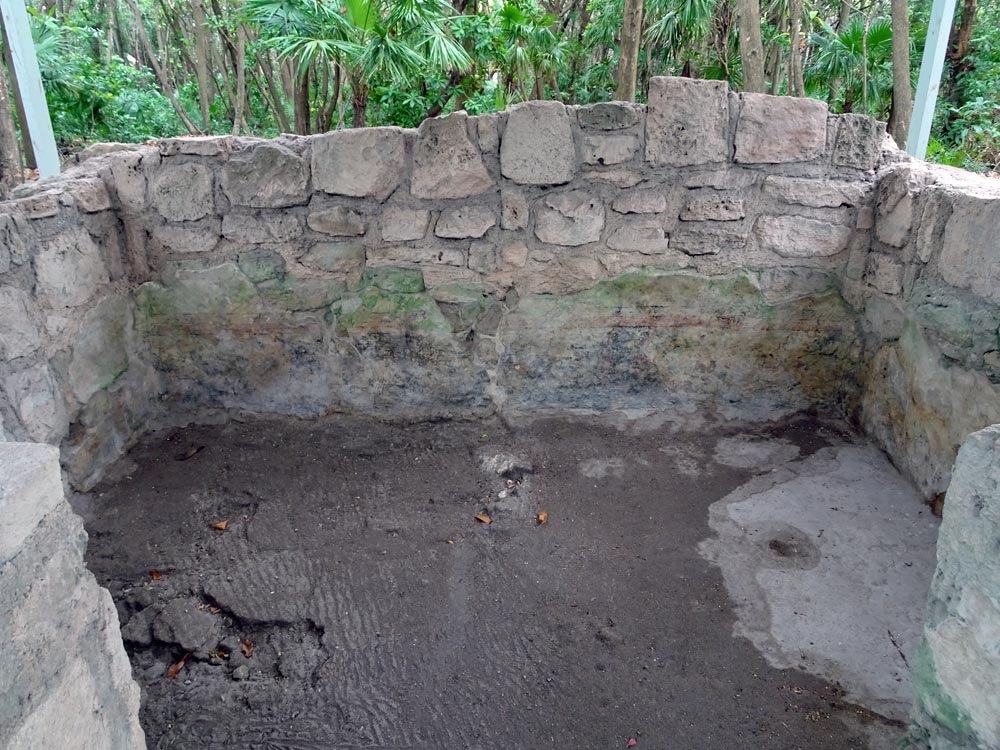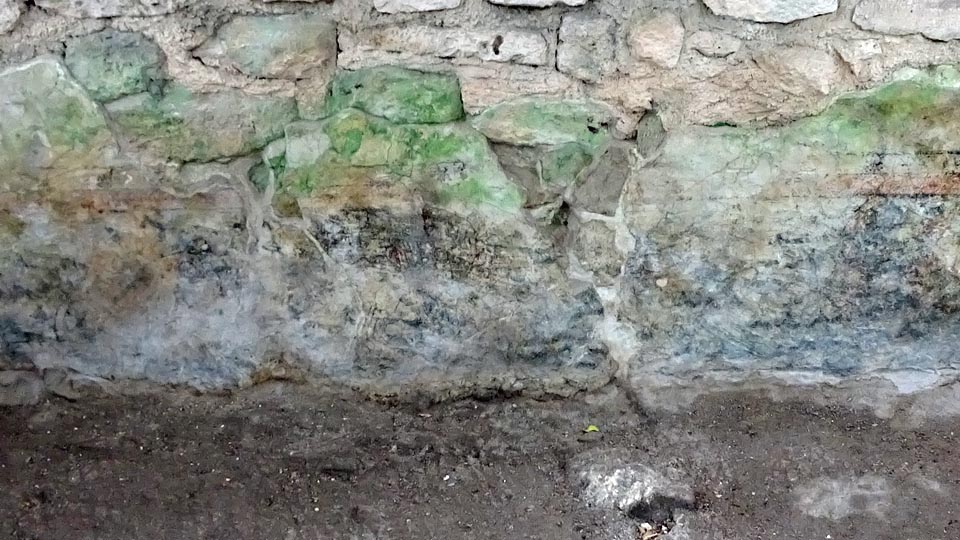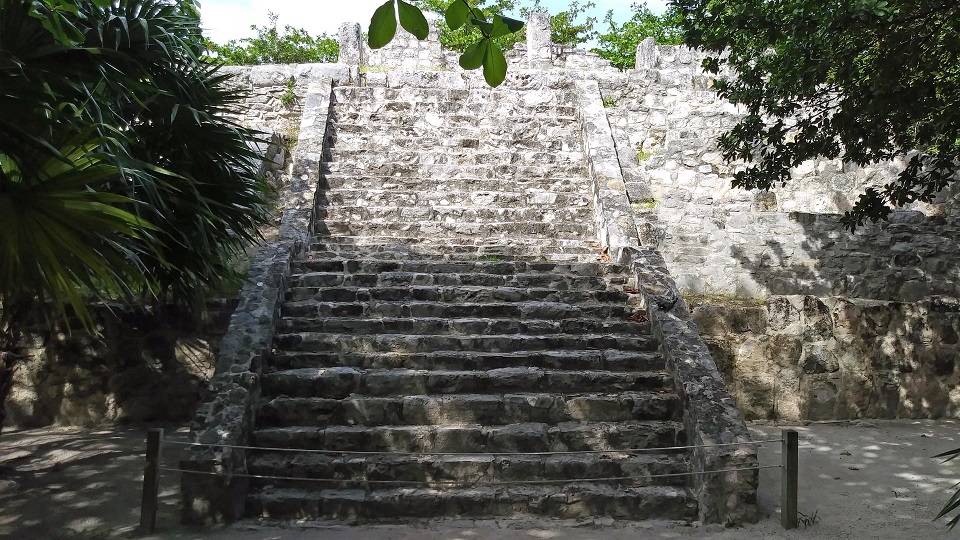The Caribbean Coast: Cancun
Please click any thumbnail at right for a larger image!
Click any highlighted name to hear its pronunciation!
The modern city of Cancun stands toward the northeast corner of the Yucatan peninsula, where early Maya settlers could take advantage of coast resources from the Gulf of Mexico to the Caribbean coast. According to the archaeological site, El Meco was originally founded as a fishing village between 300 and 600 AD, but the inhabitants abandoned the site by the seventh century. After the Classic Period "collapse" by the tenth century, however, the area rose to become a major trade center as economic and political activity shifted from the center of the Maya land to the edges, including the Caribbean coast. El Meco's most prominent standing building is Structure 1, a pyramid at the site's spatial and social center. It was built in three phases, its main body during the second. The picture at right shows a temple built as an extension from its southeast corner during its third construction phase.
El Meco
El Meco has three plazas surrounding the Structure 1 pyramid, and the largest of these is Plaza A, which lays to the front of the building. The pyramid faces east toward this space and ultimately toward the bay waters between the main coast and Isla de Mujeres. A small temple stands in the plaza's center. I took this photo from Structure 2, at the north end of the plaza. Religious temples and residential palaces enclose the area from the north, east, and south sides.
El Meco
Immediately behind the pyramid is Plaza C, framed at the west side by the massive palace of Structure 12. Along the former back wall are short platforms that may have offered benches for attending rulers. Archaeologists also discovered the limestone head of a serpent with open jaws, suggesting the presence of an altar space within.
El Meco
Toward the south end of the Cancun island is El Rey, another coastal Maya site that climbed to Post-Classic Period prominence. The site's description lists it as the island's most extensive site, with a north-south road running over half a kilometer. At left is a southbound view along this axis, flanked with residential, administrative, and ritual buildings. The photo at right features Structure 2, El Rey's tallest building, at the central plaza. It contained a major tomb with luxuries including materials in jade, shell, and copper.
El Rey
This magnificent, life-like sculpture represents a lord in a serpent headdress, ritually associating him with the Creator God Itzmanaaj. Limestone is the main material, yet fragments of stucco hint at a formerly vivid coat in blue and red. It most likely belonged to a temple incense burner, shaped in full human form as with similar works from the Yucatán Peninsula. First reported in 1923, the head was dubbed "El Rey", the 'King,' and thus came the name for the archaeological site where it was discovered.
Maya Museum of Cancun
Of the three main archaeological sites excavated around Cancun, El Rey has the most artifacts on display at the Maya Museum of Cancun, including these two finely worked vessels. At left is a miniature scene of four women grasping a pot. The vase at right is finely polished toward a glazed effect, with a bird's head atop and a latticed base below.
Maya Museum of Cancun
"Effigy censer" is the technical term archaeologists use for incense burners shaped like sacred figures, which were an important expression of religious art among the Postclassic Maya. Copal, the resin of the ceiba tree, was the main incense burned in sacred offerings during ritual. Discovered at El Rey, the cylindrical censer at left was modeled after the ceiba tree, which had spiritual significance as both copal source and World Tree in Maya myth. At right is a fantastic rendition of Chahk, a major Maya Rain God, from El Meco.
Maya Museum of Cancun
The Maya Museum of Cancun stands next to the site San Miguelito, named after a former orchard there. A walking circuit rounds the visible remains of this Maya center, an assemblage of residential, political, and ritual buildings, many grouped into distinct clusters.
This wide palace would have opened to a public space for major ceremonial events. Images of the Rain God Chahk were discovered among its steps, thus naming the structure.
San Miguelito
This small room's well-preserved fresco murals are among San Miguelito's most impressive remains. Amidst the solid waves are images of fish and other aquatic creatures. Their supernatural designs suggest that these figures are in a mythical narrative, given that the Maya envisioned the world as the back of a great caiman afloat in the cosmic sea.
San Miguelito
The southernmost point of San Miguelito's walking route reaches the site's tallest building, a pyramid facing south, toward the north end of El Rey. In fact, a road likely linked these two sites on the southern tip of Cancun Island!
The pyramid's build is common for Maya architecture along the Caribbean coast: a corniced upper frame, hints of red and blue paint, and a balustraded stairway.
San Miguelito
Starting from the imposing Structure 1 pyramid, this panorama sweeps the area at its southwest corner. Surrounding the space of Plaza B are the pyramid and several minor administrative and ritual buildings. The most intact of these smaller buildings is Structure 8, which has preserved its column bases and elevated platform. A small stone conduit runs along the ground to connect it with a later temple.
El Meco
